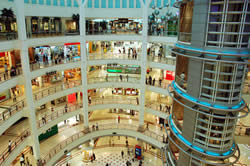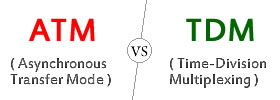Difference between Mall and Supermarket
Key Difference: Shopping malls or malls are large enclosed spaces that are often characterized with many stores that sell merchandise to the public. Malls can be medium to large in size, depending on the construction and the number of stores that it wants to hold. Supermarkets are large self-service grocery stores that offer customers a variety of foods and household supplies. The merchandise is organized into an organized aisle format, where each aisle is numbered or labeled and has only similar goods placed together.
Malls and supermarkets are two places that are necessary for a community. Malls the place where people go to hang out, shop, eat and just have fun, while supermarkets have their importance as the place the provides food and goods. These two places are related and not related. Malls are huge places that house many stores and activities for people, which can include supermarkets. Malls are traditionally one place where huge supermarkets are also found. On the other hand, supermarkets are not only limited to malls, they can be set up anywhere with a medium to a large space.
 Shopping malls or malls are large enclosed spaces that are often characterized with many stores that sell merchandise to the public. These places are also referred to as shopping arcade or shopping precinct. Malls can be medium to large in size, depending on the construction and the number of stores that it wants to hold. Shopping centers usually refer to smaller malls, while shopping malls are used to refer to the large shopping areas. The malls are enclosed and have centralized cooling or heating, depending on the weather and the area where the mall is located. Malls are also car-friendly and are associated with having large parking spaces in an underground parking lot or an adjoining building. The malls also have many different stores that sell many different kinds of merchandise, including food, jewelry, clothes, specialized stores, watches, etc.
Shopping malls or malls are large enclosed spaces that are often characterized with many stores that sell merchandise to the public. These places are also referred to as shopping arcade or shopping precinct. Malls can be medium to large in size, depending on the construction and the number of stores that it wants to hold. Shopping centers usually refer to smaller malls, while shopping malls are used to refer to the large shopping areas. The malls are enclosed and have centralized cooling or heating, depending on the weather and the area where the mall is located. Malls are also car-friendly and are associated with having large parking spaces in an underground parking lot or an adjoining building. The malls also have many different stores that sell many different kinds of merchandise, including food, jewelry, clothes, specialized stores, watches, etc.
The concept of the mall has not been a new one; they have been around since Ancient Rome. The concept itself has been acquired from the Trajan's Market that was one of the earliest shopping centers that established in Rome. Rome’s are also known for its many bazaars, which eventually developed to shopping malls. The malls gained popularity around the 1920s, following World War II, when people started shifting to the suburbs from the city. In order to make it easier for the people to shop, many stores were opened in one bigger store that allowed easier access to the various stores in the same place.
The malls have a variety of branded and local based stores. The prices of the stores also vary depending on the type of the store; while branded stores are quite pricy; other smaller stores offer normal prices on merchandise. Malls are also associated with having food courts, movie theatres, play area and many other attractions to draw in the public. A few malls, such as the Mall of America in Bloomington, Minnesota, have also housed an amusement park inside to mall itself. Malls are quite large and require a lot of time to try and visit every store. They have elevators, escalators, stairs and walkways to help the public get around from one place to another. There are various different kinds of malls: Neighborhood center, Community center, Regional center, Superregional center, Fashion/specialty center, Power center, Theme/festival center and outlet center. Another feature of the mall is that they cannot conduct sales online, they must have a proper outlet; though they can have their own websites that state upcoming events, the number of stores or a list of the stores they have, etc.
 Supermarkets are large self-service grocery stores that offer customers a variety of foods and household supplies. The merchandise is organized into an organized aisle format, where each aisle is numbered or labeled and has only similar goods placed together. The supermarket houses fresh foods, poultry as well as canned and boxed goods. Supermarkets are quite larger compared to traditional grocery stores, where people are available behind the counter to provide the consumer with goods and the consumer stands in front of the counter asking for the goods. However, supermarkets are smaller than hypermarkets or big-box markets, which are basically supermarkets combined with departmental stores.
Supermarkets are large self-service grocery stores that offer customers a variety of foods and household supplies. The merchandise is organized into an organized aisle format, where each aisle is numbered or labeled and has only similar goods placed together. The supermarket houses fresh foods, poultry as well as canned and boxed goods. Supermarkets are quite larger compared to traditional grocery stores, where people are available behind the counter to provide the consumer with goods and the consumer stands in front of the counter asking for the goods. However, supermarkets are smaller than hypermarkets or big-box markets, which are basically supermarkets combined with departmental stores.
Supermarkets have a special format where it allows consumers to pass through aisles using shopping carts or baskets and pick up whatever they require. Although, the early supermarkets did not house fresh grocery or meat, modern supermarkets have meats, poultry, bread, dairy products and fresh fruits and vegetables. In addition to fresh and canned food, supermarkets also keep household products such as cleaning supplies, baby goods, pet needs, medicine, kitchen appliances, crockery, etc. Supermarkets offer low prices and many deals or discounts on their products to attract consumers. Some even operate on negative profit margins sometimes to bring in customers. Supermarkets usually receive goods and merchandise in bulk from either manufacturers or large distributors in order to avail economies of scale. The profit margin is usually very small and the discounts are forwarded to the customers. Supermarkets may also be part of a huge chain system and may be closer to other supermarkets. Supermarkets closer together can save even more on costs by sharing distributors and slashing their transportation costs. Supermarkets are usually one-level brick and mortar store but may also include two floors depending on the amount of supplies that are kept.
The concept of an inexpensive food market that relies on discounts based on economies of scale was developed by Vincent Astor, who founded the Astor Market in 1915 but failed to be able to make a successful venture and shuttered it in 1917. The first self-service grocery store concept was developed by entrepreneur Clarence Saunders, who founded the Piggly Wiggly stores in 1916. The store become a financial success and become a franchise. Slowly, the concept started becoming popular all over the world, with many developed countries establishing their own self-service grocery stores. In the developing countries, self-service grocery stores are a recent phenomenon and have received only gained popularity in the last decade or so. Specifically in these countries, many supermarkets also offer loose or open merchandise similar to old grocery stores. People can measure our grains, rice and other staple products and buy it by weight. Supermarkets have also started offering ready-to-eat foods as a way to provide the customer to shop as well as eat at the same time. Some supermarkets may also have banks, ATMs, coffee bar, juice bar and anything else that may attract customers.
Image Courtesy: prodryers.com, guardian.co.uk









Add new comment